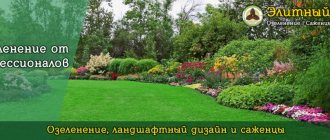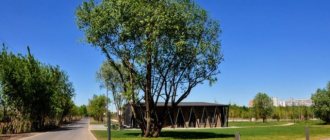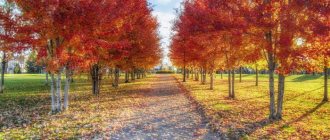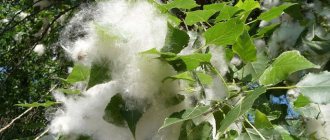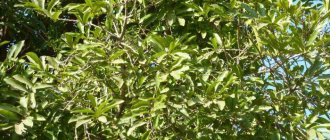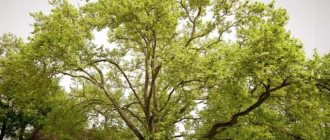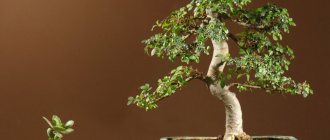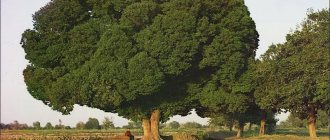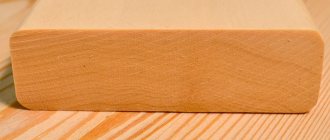Linden is a tree of the Linden family, which was recently included in the rank of subfamily in the Malvaceae family. In ancient times, linden and linden honey were highly valued, personifying the linden tree with the Slavic goddess of love Lada. Some attribute mystical properties to the linden tree, believing that lightning does not strike the tree. An ordinary linden tree lives on average 150-400 years, and some long-lived trees grow up to 1000-1200 years. According to research, trees of the Linden family appeared on the planet more than 70 million years ago. Archaeologists have found some remains of linden trees in Chukotka and northern Siberia. Currently, it is one of the most common trees in Europe, Asia and North America [1]. In ancient times, linden trees grew near temples as sacred trees. It was believed that when a child was born, a planted linden tree would serve as a talisman.
Characteristics and types of linden
Linden is a tall tree up to 30 meters long and with a dense crown. The trunk diameter can reach up to 2-3 meters. Linden leaves are wide, shaped like a heart or an oval. The flowers are fragrant, in the form of inflorescences. Linden fruits are nut-shaped.
Content:
- Characteristics and types of linden
- Chemical composition
- Beneficial features
- Benefits of linden tea
- Linden for women
- Collection rules
- Losing weight with linden
- Linden honey
According to researchers, linden has more than 40 species [2][3]. Many species serve as excellent honey plants. Linden honey is one of the most aromatic and valuable varieties. The most resilient species is small-leaved linden (heart-shaped). This species can withstand even severe frosts down to -48°C.
Tilia caucasica Rupr. — Caucasian linden
Family
Tiliaceae Juss.
Spreading.
Grows in the mountain forests of the Caucasus and Crimea. In cultivation, it is found, in addition to the Caucasus, occasionally in gardens and parks of the southern strip of the European part of the USSR, in Central Asia. In Sukhumi, in the Botanical Garden, a 250-year-old specimen reached a height of 25 m with a trunk diameter (at a height of 1.3 m) of 1.2 m and a crown diameter of 30 m.
Caucasian linden is used for landscaping in Western Ukraine, in the south of Ukraine, in the forest-steppe of Northern Crimea, in all regions of the Caucasus, in the southeastern foothills of Central Asia.
Characteristics of the tree.
Tree up to 35 m high, up to 1 m in diameter. The crown is ovoid.
Heat-loving. Tolerates drought satisfactorily, but develops well in fertile, moist soil. Lives up to 200-300 years.
The leaves are broadly oval, 6-14 cm long, obliquely cut at the base, elongated into a thin point at the apex, sharply serrated at the edges, glabrous above, dark green, bluish below, with tufts of whitish hairs at the nodes of the veins. The shoots are thin, drooping, bare, light green, later becoming yellow or red-brown (especially on the south side).
The flowers are light yellow, fragrant, collected in 3-7 inflorescences. Blooms from late June to early July. The fruits are round or oval, 10-12 mm long, 5-6 mm wide, densely pubescent, grayish-brown. Propagated by seeds, but more often by layering. Before spring sowing, seeds must be stratified. Its biological properties are similar to large-leaved linden. Found in beech, hornbeam and other mixed broad-leaved forests.
The Caucasian linden is an excellent large ornamental tree for parks in the southern zone of the European part of the USSR, very impressive as a powerful tapeworm, in alley plantings and in groups, as well as in massifs as part of the upper tier of species.
A wonderful honey plant. In the Caucasus, nuts are consumed as food and also as a hemostatic agent.
Wood.
White with a slight pinkish or reddish tint, coreless, scatteredly porous. The annual layers differ on all sections, but rather weakly; medullary rays are narrow, but distinguishable by the naked eye; on a cross section they are visible as very thin shiny lines, and on a radial section they are visible as dull stripes and spots, colored somewhat darker than the surrounding wood. The wood is light. Density at 15% humidity is 0.44 g/cm3, at 12% - 0.42 g/cm3.
Drying.
It does not warp when dried, but the wood dries out significantly.
Strength.
The wood is low-strength. At 12% humidity, the compressive strength along the fibers is 425.6 • 105 Pa, with static bending - 592 • 105 Pa. End hardness 208 • 105 Pa.
Persistence.
Low resistance.
Technological properties.
Easy to saw, easy to process with all types of cutting tools, and easy to paint.
Application.
Used for plywood, matches, musical instruments, drawing tables, carved, turned, carpentry, barrels and household items.
Chemical composition
Linden contains many substances beneficial to the human body [4]. The buds, inflorescences and bark contain glucose, protein, vitamin C, tannins, antioxidants, essential oils, sugar, amino acids, carotene, microelements, macroelements and phytoncides [5]. Tiliacin, quercetin and kaempferol contained in linden have antibactericidal, wound-healing and antipyretic properties [6][7]. The flowers also contain ascorbic acid, farnesol alcohol-based essential oil and polysaccharides.
The leaves contain protein, carotene and ascorbic acid.
Linden honey is rich in glucose, fructose, vitamins, macroelements and microelements, as well as maltose.
Linden blossom contains vitamin C, coumarin, bioflavonoids, carotene, micro- and macroelements, glucose.
Features of flowering on the site
Linden trees of various varieties bloom mainly at the end of June - in July, much later than other trees. This happens because the linden tree does not have flowers in its wintering buds; they appear only on one-year-old shoots. For the same reason, it does not bloom in the first years after planting - the tree spends its energy growing shoots and strengthening them, and only after that it will allow buds to form on them. Full flowering of a tree can begin only between the 10th and 20th year after planting, and not earlier than that.
The tree blooms for only a few weeks. At this time, the crown of the tree is completely covered with small light flowers, united in inflorescences of 10-15 pieces. Each has many stamens, but only 5 petals.
Due to temperature fluctuations, especially in the first half of spring, linden may miss flowering. If this is the reason, there is no need to fear for the tree; if there are no climatic stresses for it in the future, it will bloom next year. Otherwise, the tree needs to be examined - it may be affected by pests or diseases.
Linden trees of different varieties do not bloom at the same time. First, wild and large-leaved varieties bloom, later - Manchurian or Amur. The trees that are located in a sunny, open area of the garden bloom most intensively.
You can find out what Rudbeckia varieties look like from this article.
What varieties of Eustoma are there and what they look like can be seen at this link.What Obriet flowers look like and how they need to be grown can be seen in this article: https://2gazon.ru/ozelenenie/cvety/osobennosti-vyrashhivaniya-obriety-iz-semyan.html.
Beneficial features
Our ancestors knew about the benefits of linden. All parts of the linden tree have beneficial properties [8][9]. Linden color relieves cramps, pain, inflammation and removes sweat and urine from the body. It is also useful to make decoctions and tinctures from flowers, and gargle when you have a cold. Flowers effectively fight harmful bacteria in the body, reduce fever, and get rid of phlegm. For teenagers and old people, linden is useful for its calming properties, which help with mood swings and nervous overexcitation. Inflorescences also help reduce blood viscosity [10].
Linden decoctions are used for fainting and headaches, which helps relieve convulsive conditions. Hot decoctions are used in the form of inhalations and gargling. In addition, linden blossom is successfully used in the treatment of rheumatism of the joints, seizures, kidney and gastrointestinal diseases, and fever. For a healing effect, take a decoction of 2-3 glasses per day. Prepare a decoction at the rate of 2 tablespoons of linden blossom per glass of boiling water. This allows for increased secretion of gastric juice, which facilitates the flow of bile into the duodenum. The drink has a beneficial effect on the digestive system and helps fight gastritis and liver diseases. Decoctions help get rid of swelling and are used for weight loss.
Linden lotions effectively help with hemorrhoids, burns, gout and ulcers. Compresses are used to eliminate skin irritation. Rinsing with linden decoctions is very beneficial for hair, which makes it shiny and smooth.
Linden is very useful in the treatment of infertility due to the content of phytohormones, which are similar in composition to female hormones. For conception, it is recommended to add linden to medicinal mixtures with sage.
Landscape gardening
Linden is very often used in landscape design, because it has beautiful and dense foliage and tolerates pruning easily. It is easy to create any geometric shape from the crown.
Benefits of linden tea
Linden tea has unique healing properties for the body [11]. This golden-hued drink has a sweetish taste and pleasant aroma. First of all, linden tea is useful in the cold season, when you can easily get the flu and other colds. Tea has an anti-inflammatory effect, stimulates sweating, expectoration and has an antipyretic effect. Tea also effectively removes toxins from the body. It has a beneficial effect on the urinary tract and is useful for urolithiasis, cystitis and inflammation of the bladder [12].
Linden tea is also useful in the following cases:
- To strengthen the cardiovascular system. The flavonoids included in its composition strengthen blood vessels and make them more elastic, protecting them from sclerotic changes.
- To eliminate pain in the body. Tea relieves headaches, spasms, joint pain, and also removes swelling in the body.
- To activate digestion. Tea stimulates the production of bile, which has a beneficial effect on digestive processes.
- To relieve nervous tension and combat insomnia [13].
To prepare this aromatic healing drink, use linden blossom: pour one tablespoon of flowers into a glass of hot water and leave for 15-30 minutes, tightly covering the kettle. In addition, you can add honey to your tea. For the convenience of customers, pharmacies and specialized stores sell ready-made linden preparations in bags.
However, there are several cautions regarding the consumption of linden tea [14]. It should not be taken regularly as it increases the stress on the heart.
Tree of Worship
Ancient Slavic tribes considered it the tree of the goddess of eternal love and beauty Lada, Scandinavians and Vikings - the all-powerful guardian of the hearth, the goddess Freya. The ancient philosophers Pliny and Virgil mentioned it in their treatises, calling it a golden tree, and Europeans, considering the linden tree sacred, planted it in the courtyards of castles, around churches and temples, in city alleys and squares. In Germany, this tree was legendary; justice was carried out under its shade. In the Middle Ages, the Catholic Church idolized the linden tree, identifying the unusual shape of the leaves and the delicate aroma of the flowers with the heart of the Savior. In Picardy, three trees planted together symbolize Christianity and the Holy Trinity. This reverent attitude towards wood is far from accidental. Linden is truly a unique plant; its energy, according to esotericists, is very strong and bright. Maybe that’s why people are often interested in the question of how many years a linden tree lives.
Linden for women
Linden has long been considered a female tree. This is due to the fact that it contains phytohormones that are beneficial for the female body. Phytohormones are similar in composition to female sex hormones. They help a woman restore balance in her hormonal system. Women especially benefit from drinking tea, decoction or infusion of linden in the following cases:
- For menstrual irregularities. It is recommended to drink the drink twice brewed: pour hot water over the flowers, infuse, then keep on low heat for 30 minutes. This will allow you to extract the maximum amount of healing substances.
- For discomfort during menopause. Drinking tea daily helps avoid hormonal imbalances, which are stabilized by phytohormones.
- In the fight against neoplasms in the female genital organs - fibroids and myomas. Traditional healers emphasize that in order to obtain the expected effect, it is necessary to collect flowers during the first two days of the lunar month.
Best materials of the month
- Coronaviruses: SARS-CoV-2 (COVID-19)
- Antibiotics for the prevention and treatment of COVID-19: how effective are they?
- The most common "office" diseases
- Does vodka kill coronavirus?
- How to stay alive on our roads?
Linden tea is also useful for maintaining youth and beauty. With its help, you can get rid of extra pounds and rejuvenate the body.
During pregnancy, it is recommended to take tea and decoction of linden blossom. First of all, this will serve as a natural prevention during the period of colds and viral diseases for the weakened body of a pregnant woman. Tea can effectively prevent the appearance of edema due to its diuretic effect. Also, the linden drink has a beneficial effect on the nervous system of the expectant mother, helping to fight mood swings and insomnia.
However, when consuming linden, it is necessary to monitor the body’s reaction, and if necessary, consult a doctor.
Tilia cordata Mill. — Linden small-leaved, heart-shaped
Family
Tiliaceae Juss.
Spreading.
It grows in the forests of the European part of the USSR, including the Crimea and the Caucasus, as well as in Western Siberia, where it reaches the river. Irtysh. Found in the Alatau Mountains, near Krasnoyarsk and Altai. The northern border runs from Lake Ladoga and Lake Onega to the mouth of the river. Vagi, then to Kotlas, through the northern part of the Perm region. to the Urals.
Characteristics of the tree.
A tree up to 30 m high, more than 2 m in diameter, with a slender trunk and a compact oval crown.
The bark of young trees (up to 40-50 years old) is smooth, later deeply fissured, dark gray.
It is demanding on soils - it does not grow on low-fertility, dry, waterlogged and saline soils. The best soils for it are fresh fertile loams and sandy loams. The presence of linden in the forest indicates favorable forest conditions. Shade-tolerant. It can even grow under the canopy of spruce and fir. It is not damaged by frost or freezes. It grows very slowly in the first years. At the age of 10 years it reaches a height of 2-2.5 m, and by 60-70 years it reaches almost its maximum height. Found in deciduous and coniferous forests. It grows especially often with oak (and on podzolized soils its admixture is more significant); in some places it forms almost pure linden forests. Depending on environmental conditions, it grows either in the upper or in the second tier or undergrowth. The leaves contain lime, which speeds up the decomposition of the forest floor and improves the physical properties of the soil. It has a beneficial effect on the growth of oak, pine, larch, etc., increasing their productivity, stability and quality. Excellent fit for oak. The root system on deep soils is powerful, with a strong tap root and far-reaching lateral roots; on podzolic soils with shallow groundwater, it is shallow with a tap root.
The leaves are usually 3-6 cm long, heart-shaped, elongated at the apex (often oblique), unequally crenate-toothed at the edges (in the upper half of the leaf), dark green above, glabrous, sometimes shiny, bluish below, glabrous, with veins only at the corners. tufts of reddish hairs, leaf petioles 1.5-3 cm long.
The shoots are bare yellowish-green or brownish-red. The buds are oblique, glabrous or hairy only at the apex, covered with 2-3 scales.
The flowers are small, yellowish-white, fragrant, 5-7 (9-10) flowers in almost straight inflorescences. The bract is slightly longer or shorter than the length of the inflorescence. Blooms in July. The fruit is a spherical or ball-shaped nut (up to 0.8 cm long) with a brown shell and with faint or invisible longitudinal ribs. The fruits ripen in autumn and are carried by the wind thanks to the bract located on the stem of the semi-umbrella. The seed is obovate, brown. The weight of 1000 fruitlets is about 32 g. When sowing in spring, the seeds require long-term stratification. Cotyledons are aerial, palmately dissected. The first leaves are similar to the leaves of mature trees and, like the stem, are covered with fluff.
Propagated by seeds, layering, and sometimes root suckers. Renews itself as growth from the stump until old age. Layers are formed under natural conditions due to the close contact of the lower branches with the soil. Lives up to 300-400 (600) years.
Linden is one of the best honey plants: 1 hectare of continuous tree stand produces about 800 kg of honey.
Due to its decorative advantages and variety of uses, it is the most important species for landscaping populated areas and building gardens and parks. Possesses exceptional plasticity when molding. Decorators also highly value it for its ability to change the microclimate in gardens and parks - the dense crowns provide good shade and coolness, clean the air of dust and scent it during flowering.
Small-leaved linden has a pyramidal shape - "Ruga-midalis" Wittm. - with a narrow pyramidal crown and grayish (pure white) - "Candida" A. Henry - with almost white leaves.
Wood.
White in color with a slight pinkish or reddish tint. The species is a coreless species from the group of dispersed pore deciduous species. The annual layers differ on all sections, but rather weakly. The vessels are small and invisible. The core rays are narrow, but distinguishable by the naked eye: on a transverse section they are visible as very thin and shiny lines, and on a radial section they are visible as dull stripes and spots, colored somewhat darker than the surrounding wood. Density at 15% humidity is 0.46 g/cm3, at 12% -0.43 g/cm3.
Drying. Dries without cracks, does not warp, but dries out significantly.
Strength.
It has low physical and mechanical properties. At a moisture content of 12%, the tensile strength along the fibers is 1107-105 Pa, the shearing strength along the fibers is 12 • 105 Pa, the compressive strength along the fibers is 386 • 105 Pa, and with static bending - 629 • 105 Pa. End hardness 151 • 105 Pa.
Persistence.
Low resistance.
Technological properties.
The wood is soft, has a uniform structure, cuts well, is easy to saw, easy to process, and easy to paint.
Application.
Used in the production of plywood/matches, musical instruments, drawing tables, drawing boards, toys. Used for carved, turned, carpentry, barrels and household items. The bast of old bark is used in making paper. Bast, juice, flowers, honey, buds - in medicine. Essential oil is obtained from the flowers with a yield of up to 0.1%, a coffee substitute is obtained from the nuts, and oil is obtained from them. The bast goes to the bast.
Collection rules
Linden begins to bloom in mid-summer, so it is necessary to collect flowers during this period of the year. Flower picking begins when the buds are half open. They pick off the inflorescences and leaves located next to them. Dry the flowers in the shade in a well-ventilated, dry place. It is recommended to store flowers in bags made of natural material.
When dried, the weight of flowers decreases three times. When properly stored in a dry place, linden retains its beneficial properties for two years.
Application of wood
Linden is well used in crafts: for making handicrafts, wooden dishes, boxes, nesting dolls, and wood carvings. Thanks to its softness, cutting, sanding, and impregnation will not cause difficulties.
It will be very successful to use linden for the interior lining of a bathhouse, because... the material does not heat up much, but retains heat for a long time without emitting foreign odors. Also suitable for interior cladding.
Linden is also used to make musical instruments due to its good flexibility and acoustic properties.
Linden holds its shape well, so drawing boards, plywood, pencils, food containers, and barrels are made from it.
Losing weight with linden
Thanks to the diuretic effect of the plant, you can effectively lose weight and get rid of excess fluid in the body. It is recommended to drink infusion or tea when visiting a sauna or steam bath. This will help improve metabolism, remove waste and harmful toxins and get rid of hormonal fluctuations.
Recommended recipe for losing weight using linden:
- birch sap – 450 g;
- linden leaves – 50 g;
- rhubarb decoction – 0.5 l.
Mix all ingredients and steam for 5 minutes. Leave to sit for 30 minutes. Take 0.5 cups before meals.
A little history
In the old days, nobles planted linden alleys around their estates. They loved to walk in the shade of the dense, beautiful crowns. Some plantings have survived to this day in the form of parks.
Until the twentieth century, the main shoes of peasants were bast shoes. One peasant wore out up to 40 pairs of bast shoes per year. And for each pair it was necessary to peel off 2-3 young stickies. They made both bast and matting from it.
In many countries, linden was considered a sacred tree; it was planted near churches, and rituals were performed under it.
What can damage the root system?
The growth and development of linden depends on the condition of the root system. Therefore, it is necessary to provide for those moments when the roots are damaged by diseases and pests, or suffer from improper care:
- Excess moisture in the soil and air leads to the formation of rot on the trunk and roots. White marble rot is the result of the action of the tinder fungus. A sick tree can be recognized by the curvature of the trunk and the appearance of cracks. To prevent the disease, it is necessary to feed the linden root system in time. If an infection appears, the affected areas are treated with a mixture of chalk and potassium permanganate.
- Young trees often die after planting. This happens due to the active activity of fungi that infect the roots of seedlings. Before planting, it is necessary to disinfect the soil. It is better to plant linden in the second ten days of May, when the earth warms up well.
- The linden root system does not tolerate soil salinity well when there is a lot of sodium in the area. To displace sodium, gypsum is used, which is added in an amount of 5 kilograms per square meter.
- Without loosening, the linden root system weakens and the tree is exposed to fungal infections and pests. It becomes more difficult for the tree to fight leaf rollers and caterpillars of the lacewing butterfly. To help the tree, it is necessary to burn plant debris after the leaves fall, and regularly loosen the soil under the linden tree.
By properly caring for a tree, you can speed up its growth and strengthen the root system.
More information can be found in the video:
Leaves
The leaves are simple, leathery, pointed, with a heart-shaped base, doubly and finely toothed at the edges, dark green glabrous above, and bluish-light green below with reddish hair beards in places where large veins branch. The petiole is 1-3 cm long with tomentose pubescence, bare and reddish by autumn. The arrangement of the leaves is regular. The leaf blade is asymmetrical. The densely leafy crown of the linden creates a large assimilation surface. With an average relative fullness of the first tier at the age of 100-120 years and an average diameter of 30-40 cm, there are up to 50 thousand leaf blades on one tree.
Linden leaves contain a huge amount of calcium, which promotes the rapid decomposition of litter without the formation of coarse humus, creating better physical properties of the soil and, ultimately, increasing its fertility. In one year of decomposition, the decrease in the dry mass of linden leaves from the original is 60%, i.e. significantly higher than that of hazel, elm, ash, birch and many other species. This decrease in leaf mass during decomposition occurs mainly during the spring-summer period, which is most favorable for the development of microorganisms and soil-litter invertebrate animals. Freshly fallen linden leaves contain about 10% ash, of which more than 3% is calcium. They are rich in potassium (about 1.3%), nitrogen (more than 1.9%), sulfur (0.5-1.0%).
Long-lived
Linden is a very durable tree, usually living up to 400-600 years, and sometimes up to 1100-1200. For example, in Nuremberg there are trees dating back seven to eight centuries. In Kyiv, near the Church of the Tithes, a giant tree, whose age is close to a thousand years, is still preserved. On the streets of large cities, linden lives for about 80-100 years. However, this is not considered the limit, since in different cities there are known linden plantations that are more than 300 years old. The life expectancy of linden in Western Siberia does not exceed 300 years. Trees growing in the first tier with a small crown density are distinguished by the greatest durability. In the second tier, linden lives up to 100 years, and in the undergrowth - up to 25.
Small-leaved linden (Tilia cordata) is a tree of the first size, reaching a height of more than 30 m and more than 1 m in diameter. In unfavorable growing conditions, especially under a dense canopy of plantings, it is found in the form of an undergrowth shrub (for example, in pine forests) or in the second tier (in sandy loam subbords).
Small-leaved linden, growing in various forest growth zones, is characterized by polymorphism. Under certain environmental conditions and general properties, this species is characterized by individual variability and the identification of ecological forms. The natural range of small-leaved linden is quite wide compared to other types of linden, which are found less frequently and mainly in the form of artificial plantings. It covers a vast territory of Europe and part of Asia. However, the distribution of linden is very uneven and depends on the diversity of natural conditions and human activities. Small-leaved linden naturally grows in the south, west and southeast of England, Norway, Sweden, Finland, the northeastern part of Iran, northern Italy, Spain, and along the Carpathian islands. In our country, small-leaved linden grows in ravine oak groves of the steppe, in oak groves and pine forests of forest-steppe, in the zone of coniferous-deciduous forests, and partly in the taiga zone (southern and middle taiga). Occasionally, small-leaved linden can be found in the Crimea and the Caucasus, where it rises into the mountains up to 1800 m above sea level. In Siberia it is found in islands almost to the Irtysh. In Altai there is the Siberian linden. And in the Far East, small-leaved linden is replaced by Manchurian and Amur.
Care and cultivation, pruning of branches
Proper care of linden involves the following activities:
- crown trimming. It is carried out once every six months - in the spring before the buds open and in the fall.
Trimming should be done after the first year of the tree’s life, removing no more than a third of the branches.
- feeding Held twice a year. In the spring, it involves adding a solution to the soil in the proportions of 1 kg of manure, 25 grams of ammonium nitrate and 20 grams of urea per 10 liters of water. The second time feeding the tree is carried out in the fall, using 20 grams of nitroammophoska per 10 liters of water. The tree does not need any other additional feeding.
- watering. For young trees, soil moisture at the rate of 20 liters of water per 1 square meter of crown projection is carried out once a week depending on the weather; it should not be carried out after heavy rainfall. For mature trees, this event is not mandatory. Linden tolerates dry periods well; watering is necessary only when the soil is seriously dry.
- Loosening the circumferential circle. It is enough to carry out 2-3 times a season. At the same time, weeds are removed.
In addition to the basic care procedures described above, it is recommended to inspect the tree once every week or two for the presence of pests or diseases. This will allow you to identify the problem in time and eliminate it at an early stage, while the tree is not yet seriously damaged.
General information, places of growth
Linden (Tilia).
The first information about linden as a subject of study is found already in 370-285. BC e. The Greek name for linden, according to Stromberg, means “tree loved by bees” or “tree that attracts swarms of bees.” And the botanical name of linden comes from the Greek word ptilon (wing) after the wing-shaped bract attached to the inflorescence. Carl Linnaeus in 1753 divided the genus Linden into two independent species: European linden and American linden. In 1763, the English botanist Miller first described an independent species of linden, and the German botanist Earhart gave it a little later the name - small-leaved linden. In the linden family there are up to forty genera, uniting about 500 plant species, distributed on all continents of the globe, but mainly in the tropical countries of Southeast Asia, tropical Africa, and Brazil. The genus Linden includes up to 45 species of linden, found in the temperate and partially subtropical climate of the Northern Hemisphere.
In Russia, 16 species of linden grow and 11 exotics have been introduced. In Ukraine and Moldova you can find European, large-leaved, tomentose, or Hungarian (silver) lindens, and in the Caucasus and Crimea - Caucasian linden, or Crimean, pubescent columnar, Ledebura. In some areas of the European part, American or black linden is cultivated; abandoned, variegated - all native to North America. In the Far East, linden is also not uncommon: Amur, Komarova, spreading, Take, Manchurian, Korean, Chinese, and Olivera lindens are common there.
Significant contributions to the diverse study of the linden genus were made by travelers and many scientists, mainly foresters and botanists. Most Russian and foreign authors recognize the very significant study of linden in Russian conditions. At the same time, emphasizing that the methods of studying and systematizing the linden genus by Russian scientists are more reliable than the corresponding data of foreign authors.
In terms of habitat, linden belongs to both forest species and trees cultivated artificially on city streets, along roads and alleys, in squares and parks, around fields, gardens, apiaries and ponds, in various hedges.
The small-leaved linden, which has a very similar species in Western Siberia - the Siberian linden, is distinguished by its greatest popularity, more significant economic significance and very wide natural range compared to other species.
